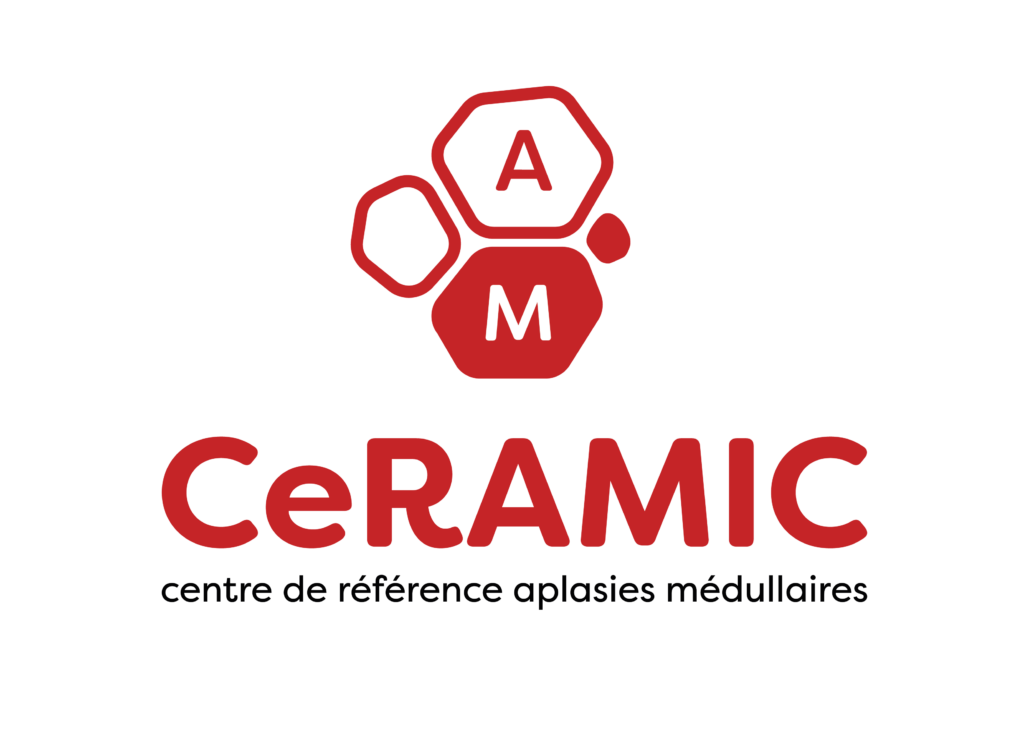The centre of reference is located on 2 sites: the Robert Debré hospital, and the Saint-Louis hospital, both in Paris.
Robert Debré
Clinical department: Prof. Baruchel, Dr. Leblanc and Prof. Dalle
- The patients aged under 15 are admitted to hospital at Robert-Debré in the pediatric hematology department headed by Prof. Baruchel.
- The outpatient clinic at Robert Debré offers care for patients suffering from aplastic anemia (diagnostic tests or current treatment such as transfusions, making up 10% of its work).
Saint-Louis
Clinical department: Prof. Socié, Prof. de Latour, Dr. de Fontbrune and Dr. Lengline
Laboratory: Prof. Soulier and Mrs. Vasquez
- The patients aged over 15 are admitted to hospital at Saint Louis, where there are two hospital admission services:
o the adolescent and young adult department (AJA) created in June 2010 and which looks after patients aged between 15 and 25.
o patients aged 25 and over are admitted to the haematology and graft department at Saint-Louis
National network
As soon as the centre of reference was set up, the healthcare authorities decided – given the rarity of these pathologies – not to draw up a list of competence centres. A network of special contacts located throughout France has, however, been set up. They are constantly in touch with the centre of reference.
The missions of the centre of reference are:
- to optimise the diagnostic procedure for patients suffering from aplastic anemia by way of multidisciplinary meetings held monthly, and information provided for professionals on the CNR website, and by receiving these patients at consultations, or in the outpatient department (specialist biological and clinical examinations, coordination with specialist laboratories);
- to optimise the individual care of patients suffering from aplastic anemia via the monthly RCP (multi-disciplinary workgroup meeting), providing advice over the telephone, and through the patient’s medical file and by seeking second opinions;
- to admit patients presenting with complex medical situations or rare pathologies for which the expertise of the CR is needed (allograft of hematopoietic stem cells for patients suffering from Fanconi anemia or dyskeratosis congenita, for example);
- to improve initial and continuous training for doctors via university and post-university courses, the CR, part of which is for professionals, writing monographs or good practice files, or recommendations;
- to improve knowledge on the physiopathology and the diagnosis of different forms of aplastic anemia, by promoting links between specialist research laboratories, medical departments and patients;
- to set up therapeutic clinical studies with the aim of improving patient treatment;
- to educate patients on treatment options by helping them to understand their pathology, follow-up and treatment;
The centre of reference also takes an active and regular role in events organised by various patient associations and in the scientific boards of these associations.
Members of the expert groups
Click on a bullet to view details of a healthcare centre
 Centre of reference coordinator / Centre of reference constituent
Centre of reference coordinator / Centre of reference constituent Competence centre
Competence centre Associated centre
Associated centre  Undefined
UndefinedSpeciality :
 Adult
Adult  Pediatric
Pediatric

